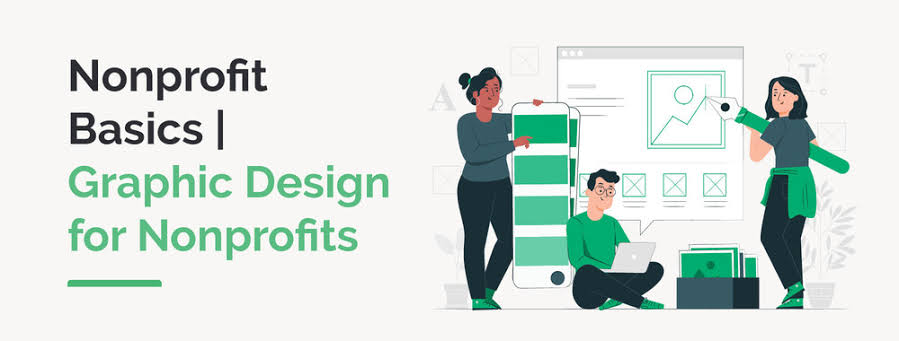Discover how to use graphic design effectively for non-profit fundraising events. Learn key strategies for creating compelling campaigns and materials, including clear messaging, cohesive branding, and audience engagement. Maximize the impact of your designs to drive participation and support for your cause.
When it comes to non-profit fundraising events effective graphic design plays a role. Well designed visuals can make campaigns more appealing communicate the organizations message and encourage increased participation and donations. For non profits working with budgets its crucial to maximize impact through design. This article delves into strategies and best practices for crafting graphic design campaigns and materials tailored for non profit fundraising events.
Understanding the Impact of Graphic Design in Fundraising
Graphic design acts as a communicator helping non profits share their message promote events and connect with potential donors. Strong design not grabs attention but also establishes credibility and reinforces the organizations brand image. The right visuals can create a sense of urgency, motivate action and ultimately drive successful fundraising outcomes.
Key Components of Graphic Design for Fundraising Events
1. Clear and Compelling Messaging
The role of design in fundraising is to convey a message that resonates with the audience. Well design should prioritize communicating the events core message in a way that captures attention and engagement.
1. Define the Events Purpose Clearly outline the events goals and objectives. Whether its gathering funds for a project raising awareness about an issue or commemorating a milestone the design should reflect the events purpose and significance.
2. Create a Compelling Call to Action Integrate an enticing call to action (CTA) that prompts viewers to take steps, like buying tickets donating or volunteering. The CTA should stand out and be persuasive leading potential supporters towards the next course of action.
2. Cohesive Branding and Visual Identity
For non profits it's essential to maintain a brand identity that reinforces their mission and values. Graphic design should be consistent with the organizations branding for recognition.
To achieve this use the non profits colors and fonts in your designs. This helps establish a look and builds trust with the audience.
Additionally develop a visual theme that resonates with the events goals and target audience. This theme should be incorporated across all design materials such as invitations, posters, social media graphics and event signage.
3. Engaging and Professional Design
Effective and captivating design can greatly impact the success of a fundraising effort. A well crafted design not grabs attention but also communicates trustworthiness and professionalism.
- Prioritize Graphics: Utilize images and visuals to achieve a refined and professional look. Steer clear of using quality or blurry images that could diminish the overall effectiveness of the design.
- Focus on Readability: Ensure that the text is easily readable by selecting font sizes, styles and contrasts. Clear and readable text is crucial for conveying information and making sure the message is comprehended.
4. Targeted Audience Engagement
Grasping the audience and customizing the design to suit their likes and dislikes can greatly boost involvement and feedback rates.
- Explore Audience Tastes: Dive into research to uncover the preferences, age groups and habits of your intended audience. This insight can guide the creation of materials that strike a chord with them and cater to their unique interests.
- Tailor Design Features: Adjust design components to resonate with different groups within your audience. For instance if the event is focused on families incorporate elements in your design that convey a welcoming vibe.
5. Effective Use of Media and Channels
When it comes to designing materials it's important to tailor them for different media and distribution channels to ensure they have an impact. Here are some key points to consider.
- Adapting for Formats: Make sure your designs are suitable for both online and offline use. This means optimizing graphics for platforms and ensuring that printed materials are set up for quality printing.
- Leveraging Media: Use social media platforms to promote your event through eye catching graphics. Create content like infographics and event sneak peeks that can be easily shared to boost visibility and encourage followers to spread the word.
- Tips for Designing Fundraising Materials:
1. Prioritize Simplicity
A design that is simple effectively communicates the message and avoids clutter. It's important to prioritize a layout that is clear and uncomplicated showcasing details and ensuring user friendly navigation.
2. Use Visual Hierarchy
Utilize a hierarchy to direct the focus of viewers towards the elements. Employ variations in size, color and positioning to highlight crucial details like the date of the event, its venue and the call to action.
3. Include Testimonials and Stories
Include feedback, tales of achievement or words from those who have benefited to establish a bond, with your audience. Real life experiences can effectively showcase the significance of your fundraising initiatives and inspire supporters to participate.
4. Test and Review
Prior to finalizing the design it's important to conduct a test run with a group of stakeholders or potential advocates. Collect their feedback and make any needed modifications to ensure that the design conveys the message and connects with the audience.
5. Stay Within Budget
With limited funding focus on design aspects that provide value for your money. Explore options like utilizing design software or templates to ensure visuals look top notch and polished.
Conclusion
Graphic design is crucial, for the success of non profit fundraising events as it improves communication captivates the audience and strengthens brand identity. By prioritizing messaging consistent branding polished design audience targeting and strategic media utilization non profits can develop persuasive campaigns and materials that encourage involvement and support. Following guidelines and staying within budget ensures that design efforts are both impactful and economical. Through graphic design non profits can effectively advertise their events motivate action and reach their fundraising objectives.
